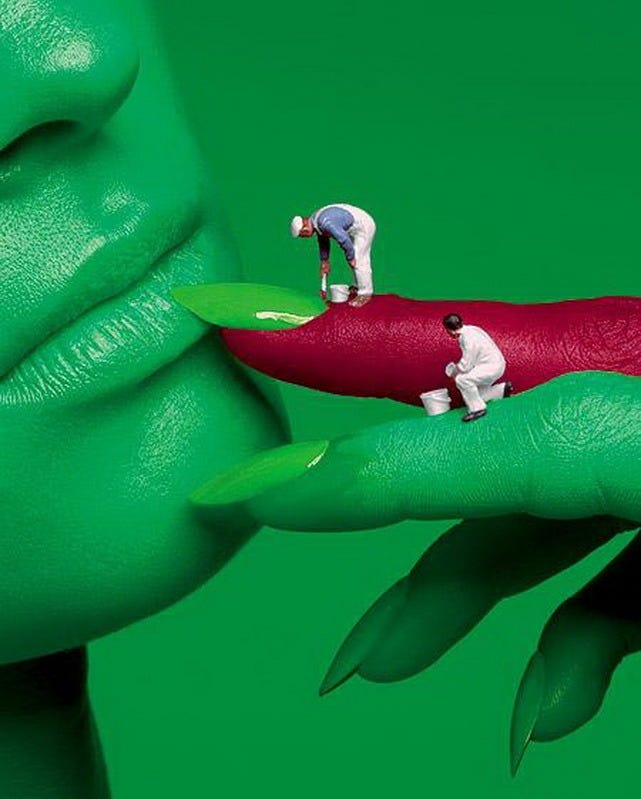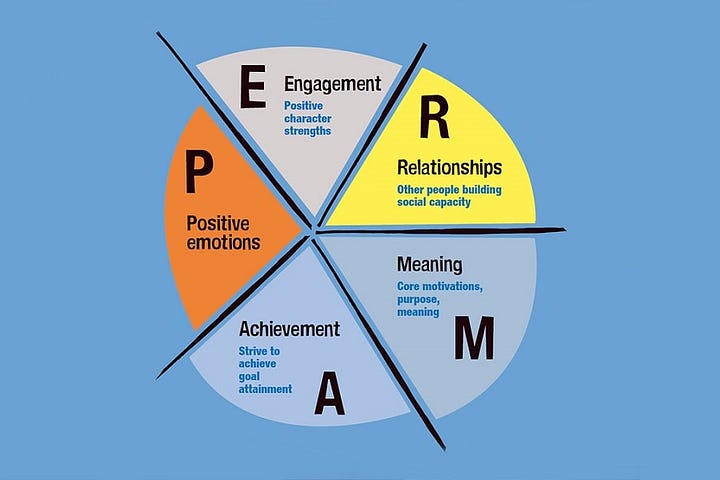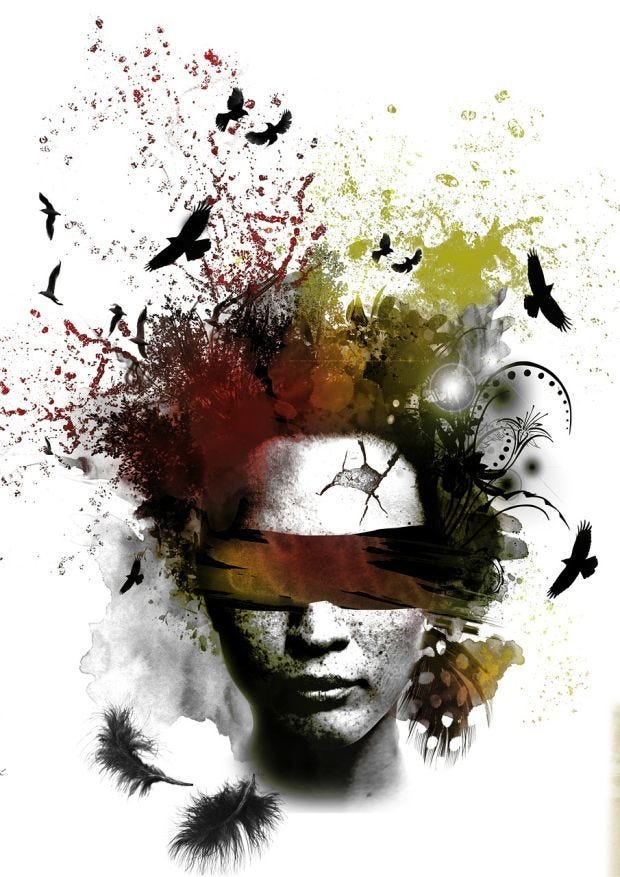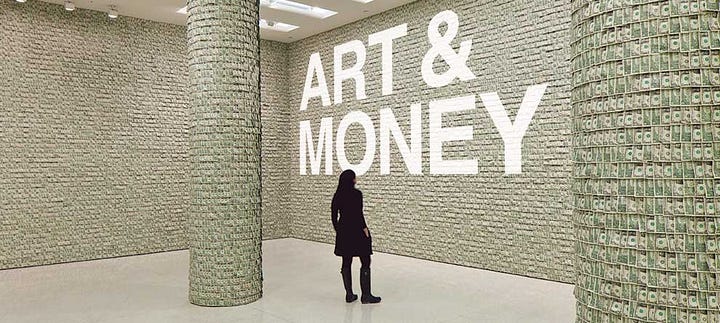
I know that in the world of ‘creative capitalism’ we have lost many artists, creatives, musicians and more, but there is not one to blame. Not even corporations. Because, getting lost requires two parties, and, although it is easy to blame corporations and entrepreneurs for the intertwining money and art, this article is not about blaming; it’s about coming together.
According to the New Yorker “ The intertwining of art and money has even been part of the positive character of the modern age, when artists fought free of princely and church commissions, and began to paint pictures intended for sale in a free market of sectors.” Although the above article was written in 2015, the viewpoints are largely the same through the ywRA. The authors goes to state that the separation between money and art has been around since the Industrial Age.”
Art, Money and Moving towards Positivism
The moral issue is about what rising prices can do to our feelings about pictures. For good or not, some idea of money has always been constitutive to our idea of art,” Copnik states. And for the most part, this concept is not new nor necessarily bad. Accordingly, the separation has largely been positive. However, while this article is not an account of anxiety or depression, a few statics have been noted. Based on diagnostic interview data from the National Comorbidity Sudy Replication (NCS-R), taken between 2010–1013 the year prevalence of any anxiety disorder among U.S. adults aged 18 or older.

- An estimated 19.1% of U.S. adults had any anxiety disorder in the past year.
- Past year prevalence of any anxiety disorder was higher for females (23.4%) than for males (and 14.3%).
- Among U.S. Adults, 33.7% of adults experienced mild to moderate anxiety, while 22.8% experienced severe anxiety.
In adults, the figures for slight were almost the same, but the increase in adults (33.7%) should be noted, reporting slight anxiety to be at 43.5% for young adults. These statistics have been linked to several factors, including the loss of creativity and depressive symptoms.
In my view, as in Copkin’s and the view in Psychology Today enables those struggling with anxiety and depression who have some outlets and source of support for coping, are on the line towards achieving their goals. Accordingly, many people who become addicted to drugs or alcohol have alexithymia, a term that describes people who don’t understand what they’re feeling or how others feel or can’t put their feelings into words. Creative approaches such as art therapy, music therapy, and psychodrama allow people to express difficult thoughts, memories, and feelings without being constrained by words.
Positive Psychology
It doesn’t take long to find a link between Positive Psychology and Creativity, and the research behind the linking of the two concepts.
According to Outreach.com, “Positive Psychology is an area of psychology founded by Professor Martin Seligman that shifts the focus from what is clinically wrong, to the promotion of well-being and the creation of a satisfying life filled with meaning, pleasure, engagement, positive relationships and accomplishment.”
This is in line with the course of movement overall, not just psychology but on a personal level as well. For example, if one was offered a lucrative amount of money from a despondent customer who didn’t like to appreciate the piece of art, now, there may be more movement towards lower pay but more appreciation and joy towards the buyer.

Creativity
According to Battey, (2019), the VIA Institute states that for Character, more specifically, creativity is one of the character strengths, along with curiosity, judgment, love of learning and perspective, which defines the virtue of wisdom and knowledge. In the VIA, creativity is seen as synonymous with originality and ingenuity and is defined as the ability to think of novel and productive ways to conceptualize and achieve goals.”
Creativity has the potential to be in the toolkit for those who from suffer reactivity, however, there are many different reasons/for it-including but not income limitations, ability for expression and/or both, perhaps staying on the journey of turning your life around, and writing things down without expectation, for the love of the craft.

Why place such importance on money versus the craft?
Personally I believe if bought and invested more in creative pursuits, the numbers on the anxiety-depression scale would come down. I lean slightly towards Art and the process than money, but I would not say no to an income for my vision, everyone needs to make a living or view art as a side project for extra income and/or an outlet for creativity. We shouldn’t be too quick to judge the predicaments of others, many like to receive monetary compensation, and there should not be any judgment in this choice; to each his own, as they say.
However, going through the legal jargon of Copyright Laws requires knowledge and learning of the ins-and-out. “Globalization and the currency economy drive a lot of art and creative products; bringing, less money for the artists as it is reproduced. “ And there is something disturbing about one in which there seems to be so little imagination left to find ways in which democratic horizons of human possibility that such art once symbolized can still be shared. For the time being, at least let’s tip the chef.” (Gopnick, Adam.(2015.) Art and Money)
Solidity and Income
The first argument seems to stand on grounds in how solid the piece seems. The second argument deals mostly with income.According to Copnik “At the beginning of the twentieth century, as S. N. Behrman documented in these pages, in his famous Profile of the art dealer Joseph Duveen, the same kind of inflationary bubble afflicted the world of Old Master art,” or, “ The Masters of Old Art” were the least affected, but sparked the issue of Copyright Law and Infringement and Copyright.
There is an insistence of artists wanting fair compensation and fair use of their materials. Fair Use simply means that your work can be used without paying royalties but it’s standard practice to name the artists and the source from where it came from. According to the 2011 article, this is part of the artist’s “Copyright, Fair Use” and why the issue of Copyright Infringement has become so prominent in the last decade( at least this way, artists retain whatever money) they received from their product.
However, going through the legal jargon of Copyright Laws requires knowledge and learning of the ins-and-out. “Globalization and the currency economy drive a lot of art and creative products; bringing, less money for the artists as it is reproduced. “ And there is something disturbing about one in which there seems to be so little imagination left to find ways in which democratic horizons of human possibility that such art once symbolized can still be shared. For the time being, at least let’s tip the chef.” (Gopnick, Adam.(2015.) Art and Money)

Copyright and Judgement
Copyright is incredibly complex. Thoughts, ideas, everything is closely scrutinized, not to mention about copyright infringement, which according to Wikipedia is “ is the use of works protected by copyright law without permission for a usage where such permission is required, thereby infringing certain exclusive rights granted to the right holder, such as the right to reproduce, distribute, display or perform the protected work, or to make derivative works. The copyright holder is typically the work’s creator, or a publisher or other business to whom copyright has been assigned. Copyright holders routinely invoke legal and technological measures to prevent and penalize copyright infringement (Wikipedia).
Whether the work is copyrighted or not, it may not be either, or both. The producer or artist has the final word on whether money, free use of artwork or both can be a feasible solution, according to law and societal standards. One way or another, one should not judge the canvas upon which one display one’s work, rather let the eye be the beholder and try to open one’s mind to the endless possibilities of the creative process.

